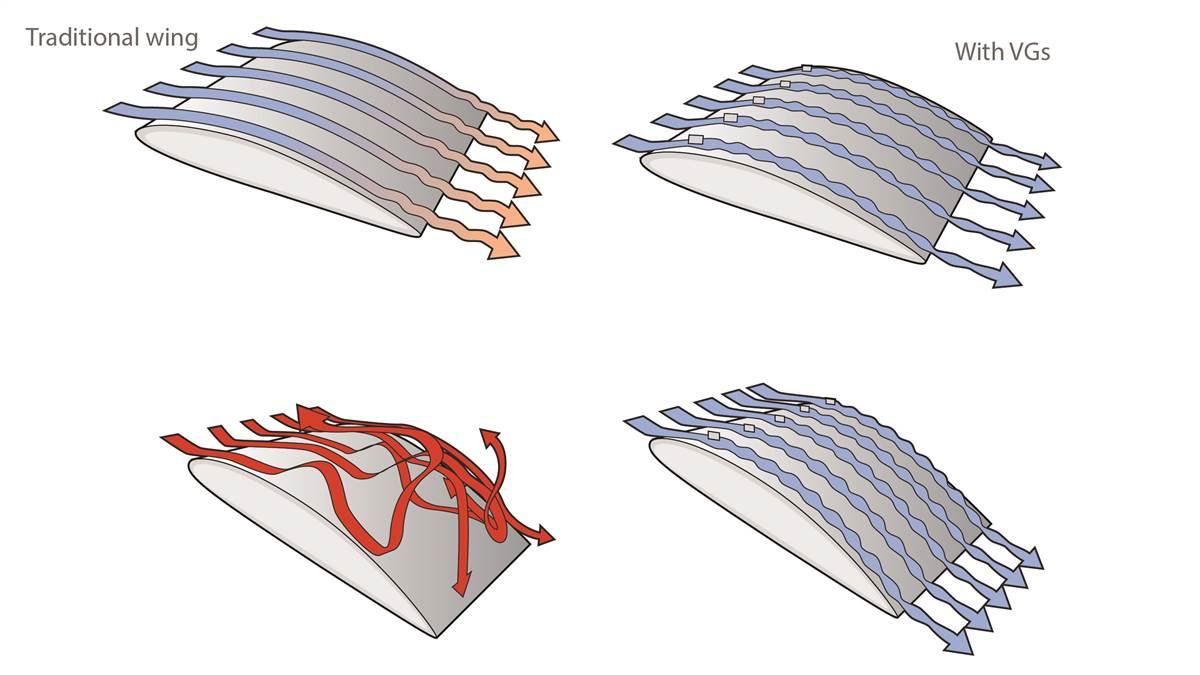
Vortex generators (VGs) do exactly what their name states: The small wedge- or T-shape tabs create vortices of air across localized portions of wings on aircraft.
For decades, VGs were used primarily on airline transport and military aircraft. They’ve since made inroads to general aviation. You may see them installed on horizontal stabilizers and the leading edges of wings.
On multiengine aircraft, vortex generators improve controllability at slow airspeeds and reduce stall speeds, permitting slower approaches. The slower stall speed can yield a higher takeoff weight, thus improving the useful load. Similarly, VGs on single-engine aircraft lower stall speed and improve slow-speed handling.
How do they work? As air flows over an aircraft, it sticks to the surface to the wing and produces lift. The separation of airflow from a wing’s upper surface when the critical angle of attack is exceeded will cause the wing to stall. Vortex generators create their own vortices. These swirls of air energize the layer of air immediately above the wing’s surface and cause the air to remain attached to the airfoil longer, as angle of attack increases.




